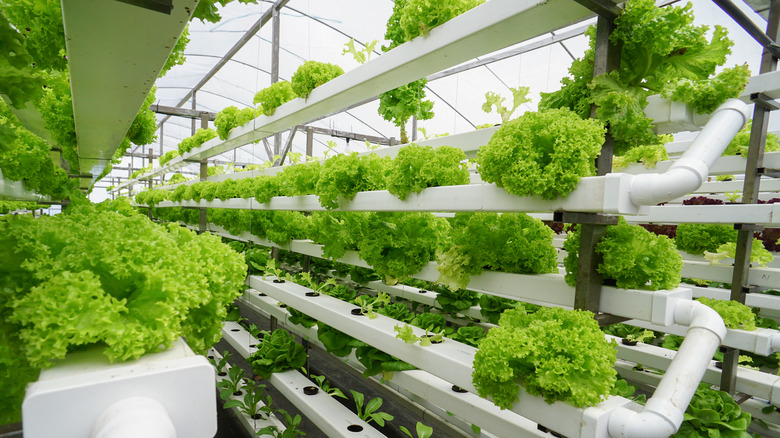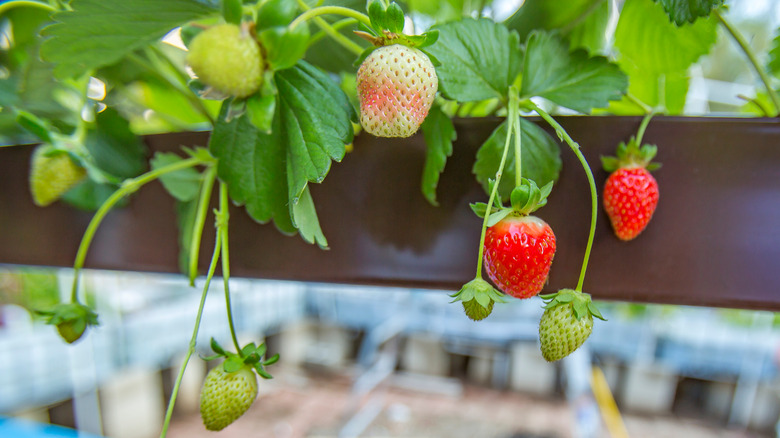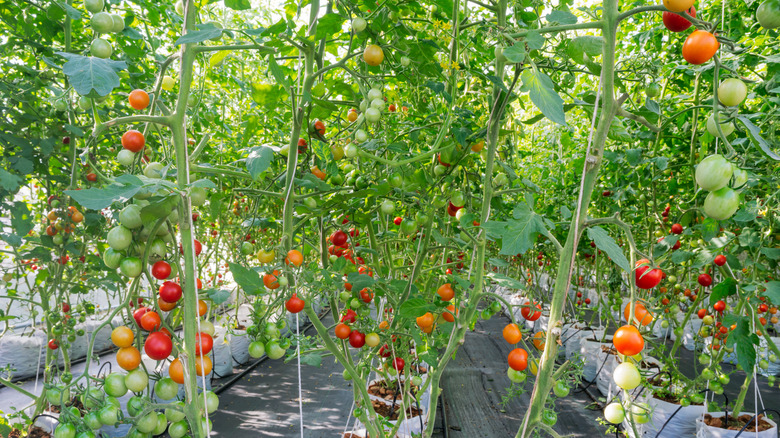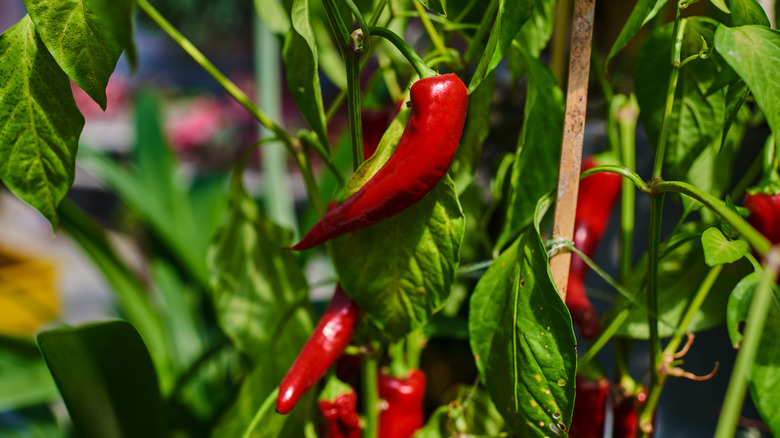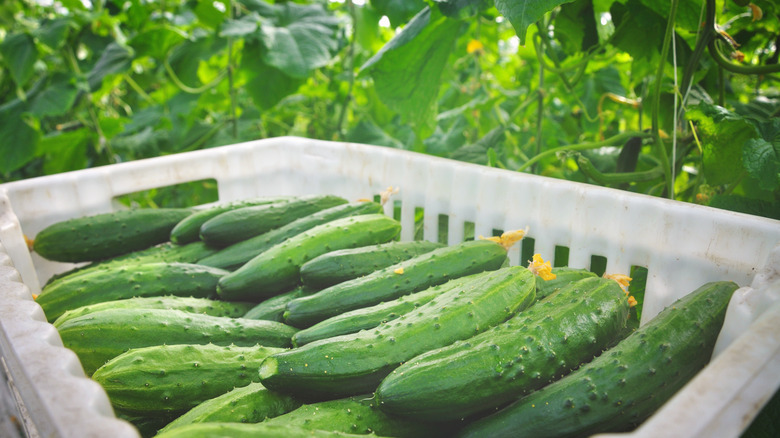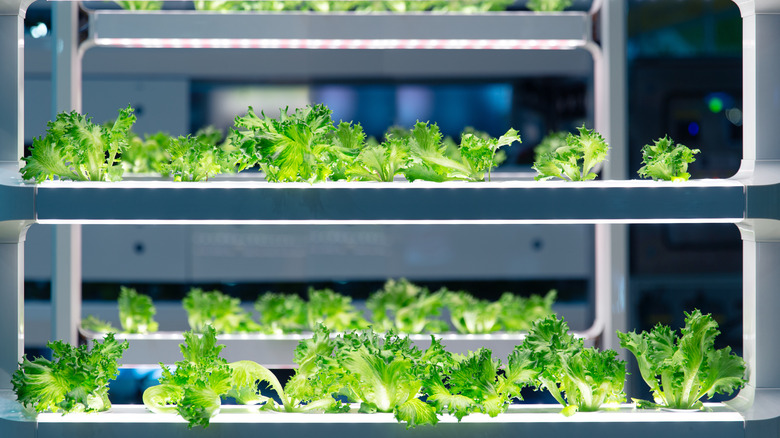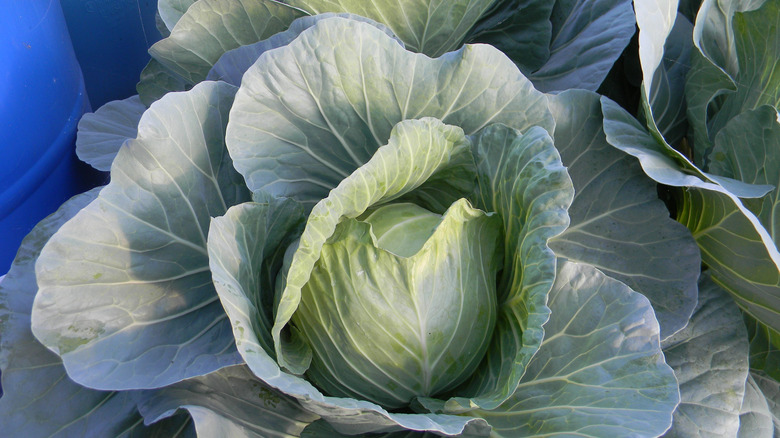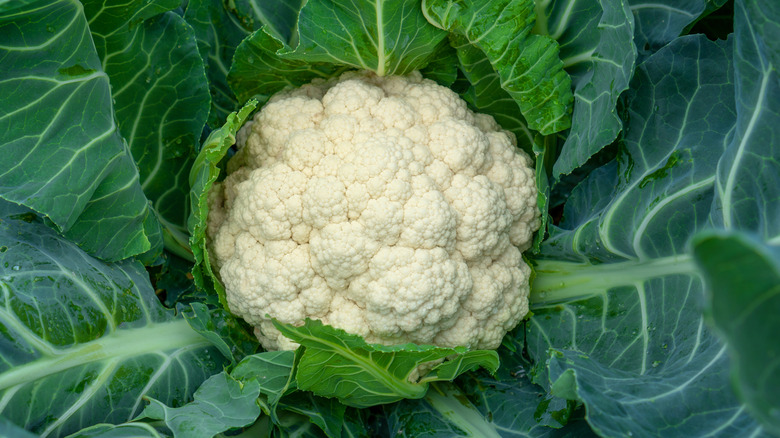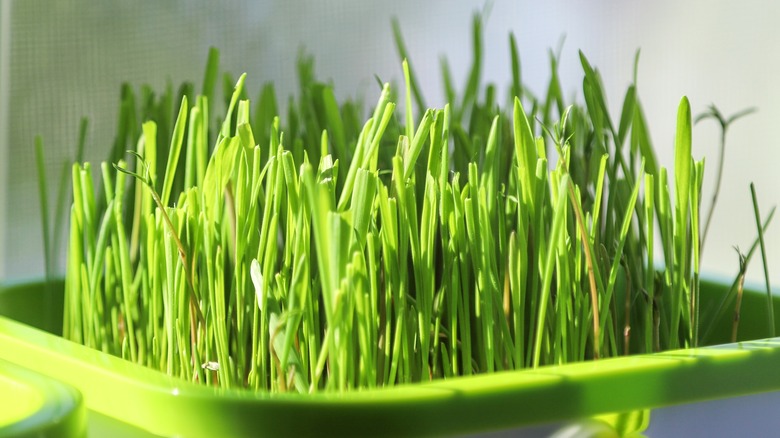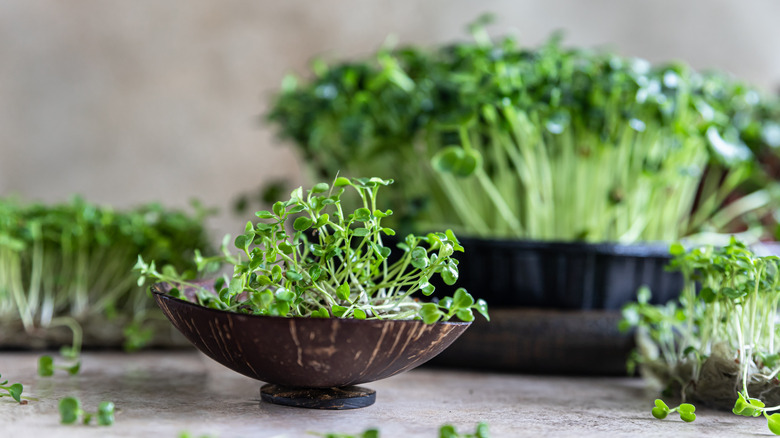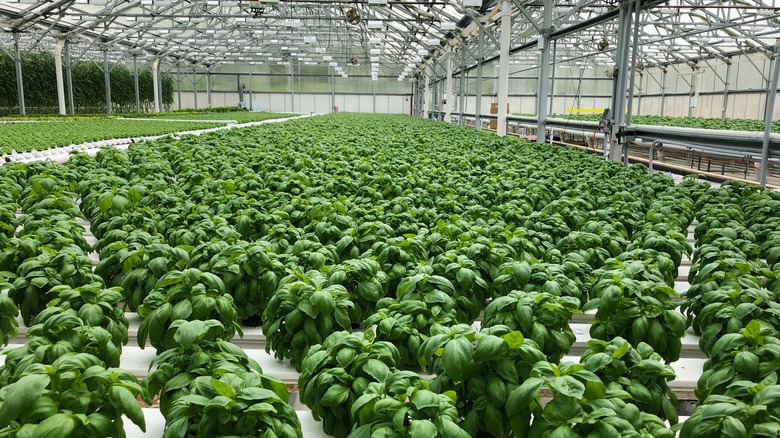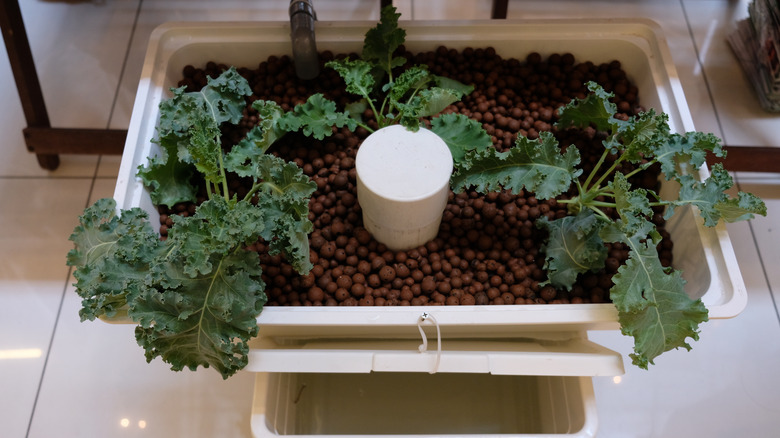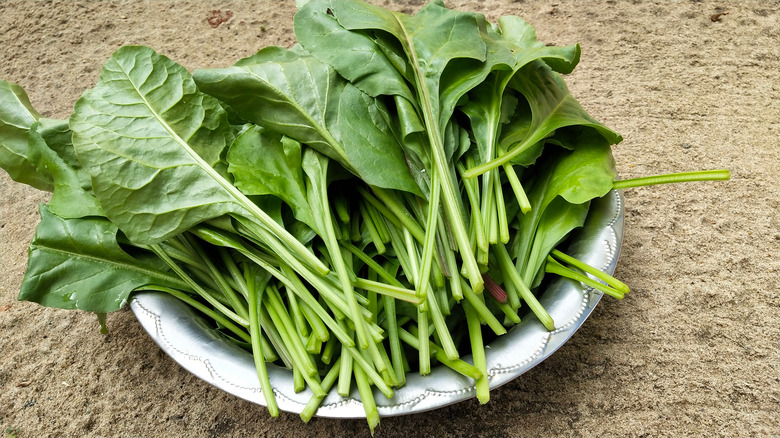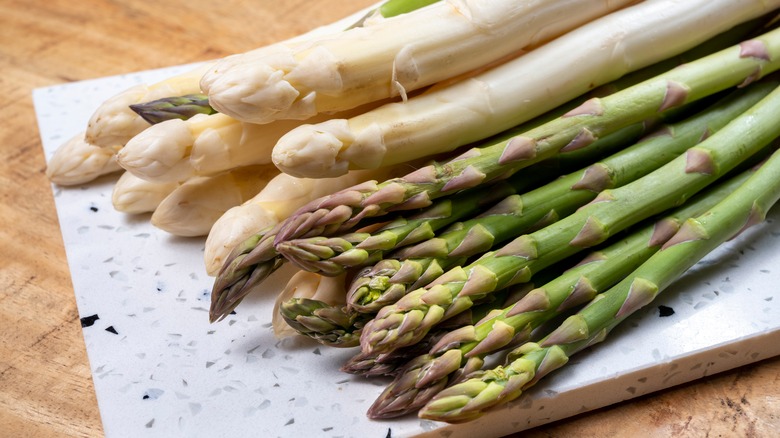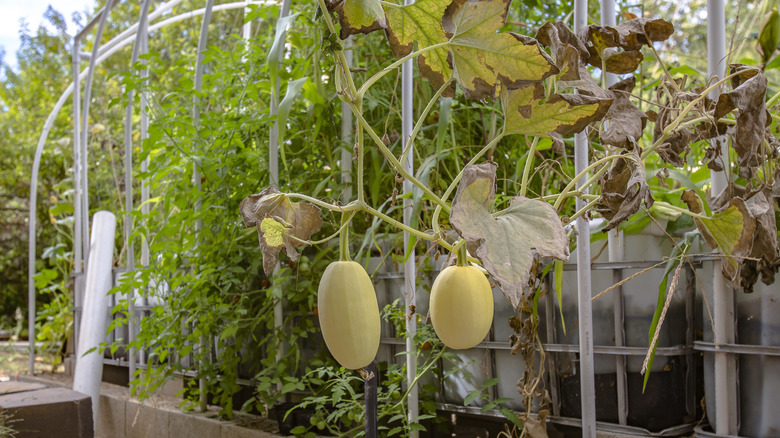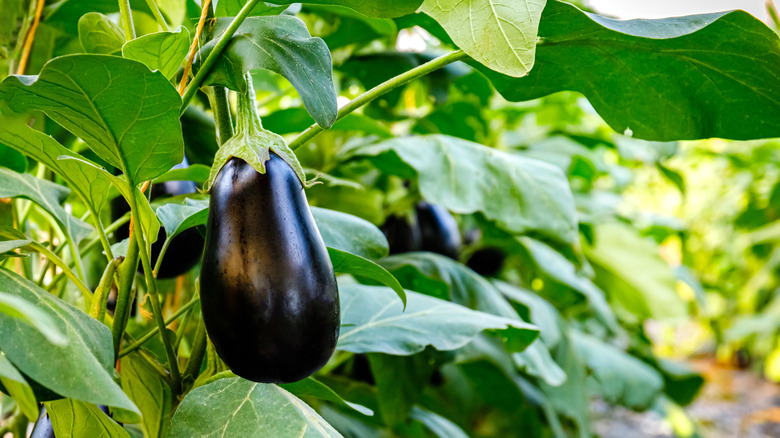15 Edible Plants Perfect For Aquaponics
Have you heard of the hot new trend that incorporates a fish farm into your backyard garden in order to use fish poop to nourish your plants? Well, as it turns out, the practice of aquaponic farming has been in place since as far back as 2000 B.C. Historians have found evidence of these systems throughout the cultures of the ancient Aztecs and Egyptians. It is generally thought to have been commonplace thousands of years ago in China, Greece, Japan, and the hanging gardens of Babylon as well, according to the University of Washington.
So, for starters, what is it? As defined by the Aquaponic Source, aquaponic farming is a combination of aquaculture and hydroponics. The system imitates nature by replicating the symbiotic relationship of water, good bacteria, and fish. In other words, it's essentially a method of employing fish to do the work of fertilization by simply eating food and expelling waste.
Much from nature can thrive in an aquaponic environment, but not quite everything. Plants with highly specified pH needs will suffer, whether they like it particularly acidic or alkaline; things like blueberries and chrysanthemums. Mint is a touchy subject among aquaponic growers. Per Gardential, it grows so well it can become invasive and cause unintentional harm to its neighbors.
If you're ready to give this extremely old yet hot new trend a try, we've got you covered with a list of the best edible plants to work with first.
1. Strawberries
Lucky for us, sweet and undeniably delicious strawberries (Fragaria ananassa) are a great option for your aquaponic garden. How to Aquaponic lists vertical towers and the Nutrient Film Technique, known as NFT, as the best two ways to grow aquaponic strawberries. Purchase a plant from a garden center to get yourself started because a seedling can take years to reach the point of bearing fruit.
Strawberries require a water pH level between 5.5 and 6.5, along with temperatures that stay in the range of 60 to 80 degrees Fahrenheit. Tilapia is recommended as the best fish accompaniment.
2. Tomatoes
Just like in a traditional garden, aquaponic tomatoes (Solanum lycopersicum L.) will require stakes or trellises for support as they get taller, says Go Green Aquaponics. They take less time to reach maturity than those planted in the ground and may be ready to harvest in as little as 60 days. All tomato varieties are fair game.
Tomatoes thrive in water up to 85 degrees Fahrenheit with a pH level falling between 5.5 and 6.5. Warm water fish make the best choice here, such as trout, koi, and tilapia.
3. Peppers
It's not just chili peppers, but all members of the esteemed Capsicum genus that will love your aquaponic system. How To Aquaponics says high levels of direct sun exposure will play an important part in their growth.
Consistent water temperatures hovering in the 70s Fahrenheit are important for peppers. Don't let it go below 60 or over 80 degrees. For air temperature, warm days and cooler nights work well. Like many other plants, peppers prefer a slightly acidic water pH level, but they can handle up to 7.0, which is considered neutral.
4. Cucumbers
Aquaponic systems contain high levels of nitrates, which cucumbers (Cucumis sativus) absolutely love, explains Flourishing Plants. Nitrogen aids in the production of chlorophyll, which is abundant in green vegetables. You're likely to find that a support system will come in handy for these fast-growing vines.
Cucumbers require slightly acidic water and full sunlight for optimum growth. Keep an eye on root growth. Left unattended, roots have the potential to grow out of hand and potentially clog your aquaponic plumbing.
5. Lettuce
It makes sense that water-loving lettuce would love a water-based aquaponic system. For an easy-to-maintain crop, generic loose leaf (Lactuca sativa), butterhead (Lactuca sativa var. capitata), or romaine (Lactuca sativa var. longifolia) are good varieties to get started.
Keep the water temperature in the range of 69 to 74 degrees Fahrenheit, and be ready to start making sandwiches because this plant is bound to grow quickly! Why Farm It says aquaponic lettuce can be ready for harvest in a third of the time it would take to grow traditionally in soil.
6. Cabbage
Farming Aquaponics has all the details on growing low-maintenance cabbage (Brassica oleracea var. capitata) aquaponically. Each variety has a different seed to harvest growth rate, and they recommend choosing one based primarily on when you wish it to be ready to consume.
Cabbage is a cool weather vegetable, which means it's a cool water plant. Ideal water temperatures fall between 45 and 75 degrees Fahrenheit; definitely do not let the temperature go any higher. Water pH level can range from 6.2 to 6.6 for best results. Cold water rainbow trout make a great companion fish.
7. Cauliflower
Per The Hydroponics Planet, there are over 100 varieties of cauliflower (Brassica oleracea, var. capitata) from Italy, northern Europe, and Asia. The consistent climate offered by an aquaponic system means you can choose any one you like.
The best water temperatures for aquaponic cauliflower are between 66 and 77 degrees Fahrenheit, although dropping it down into the 50s could make them grow faster. Six hours of daily sunlight is a good rule of thumb; either too much or too little can be detrimental. Choose trout for this cool water plant.
8. Wheatgrass
Bring on the juicers! You can even grow wheatgrass (Pascopyrum spp.) in an aquaponic system. It's so easy, Just Keep Swimming Aquaponics can show you how to do so in a mason jar with one little plant and one little betta fish, via Instructables Workshop.
A note of caution on wheatgrass from How to Aquaponic is to make sure to dry it completely before storing it in order to avoid mold growth. Per Horticulture Advice, wheatgrass requires slightly acidic water at a cooler temperature range between 60 and 75 degrees Fahrenheit. Top fish choices include salmon, carp, and trout.
9. Microgreens
Microgreen is a generic term pertaining to any vegetable harvested as a germinating seedling within two weeks after it first pops up above the soil. Micro Veggy explains that not all microgreens are edible, such as anything from the nightshade family, which can prove toxic. However, they list more than 87 good ones!
For beginners, Gro Cycle recommends sticking to tried and true fast growers like broccoli, radish, mustard, and arugula. Just be prepared to slightly adjust water temperatures according to each plant's preferences. For instance, since arugula is a cold weather plant, it will thrive in cooler water.
10. Basil
Yum, basil! Did you know this herb pairs well with those delicious strawberries you probably already got started and other summer fruits, too? The mighty basil plant (Ocimum basilicum) is a culinary staple and a great addition to your aquaponics garden.
According to Portable Farms, this tasty herb can handle one of the widest pH ranges — anything from 5.1 on the acidic side up to 8.1 on the alkaline side is a go. A duration of 55 days in an aquaponic system can yield fully formed plants up to 2 feet tall.
11. Kale
The Aquaponics Guide places kale (Brassica oleracea var. sabellica) in their top five because it's a fast grower that virtually takes care of itself. Pick the dwarf blue curled varietal for your first plant and in about eight weeks, it'll be ready to transfer from the garden to your plate.
For water, maintain a pH level from 6.0 and 7.5, and temperatures between 55 and 70 degrees Fahrenheit. In regards to air temperature, keep it above 55 degrees Fahrenheit and upward of 70. Kale works well for novice gardeners because it matches whatever type of fish you have.
12. Spinach
Spinach (Spinacia oleracea L.) is another easy-to-grow favorite of The Aquaponics Guide. That is to say, it's easy provided your system meets specific criteria. Water spinach (Ipomoea aquatica) is recommended as well, but it's important to note that, regardless of its name and similar flavor, this is a completely different plant that is not even related to regular spinach.
Spinach needs a ton of sun (up to 12 hours daily) but it also demands cool temperatures overnight. Water temperatures can safely go as low as 45 degrees Fahrenheit but should maintain a consistent pH level between 6.0 and 7.0.
13. Asparagus
Asparagus (Asparagus officinalis) is on the pickier side when it comes to growing conditions. As How To Aquaponic explains, it has a large root system; therefore, it cannot share a grow bed with other plants.
In a perfect world, water temperatures would go up to 85 degrees Fahrenheit during the day and down to 60 degrees at night. But it will be easier to keep them steady between 65 and 75 degrees. For a faster-growing crop, air temperatures can be raised up to 80 degrees along with adequate circulation. The acceptable pH range is narrow: 6.5 to 7.0.
14. Summer squash
Similar to asparagus, summer squash (Cucurbita spp.) is another crop with large roots that will do better on its own. Per Farming Aquaponics, your first harvest should be ready in about two months.
Summer squash appreciates very specific air and water temperatures, both hovering between 75 and 78 degrees Fahrenheit. Water pH should be on the slightly acidic side of the scale. Summer squash also requires a minimum of six hours of full sun each day. Tilapia is a suitable companion fish.
15. Eggplant
Recommended aquaponic eggplant (Solanum melongena) varieties include 'Black Beauty', 'Ichiban', 'Little Fingers', and 'Easter Eggs'. Each offers a range of sizes and shapes.
To best grow eggplants, the water pH level should fall between 5.5 and 7.0, and the temperature needs to stay above 70 degrees Fahrenheit. Cooler water will cause root damage. Long days of full sun exposure (up to 14 hours) yield the largest fruit. Farming Aquaponics says eggplants match well with koi fish. They add that you can even experiment with ducks.
Does this mean the next gardening fad will be called duck-quaponics? Stay tuned.
